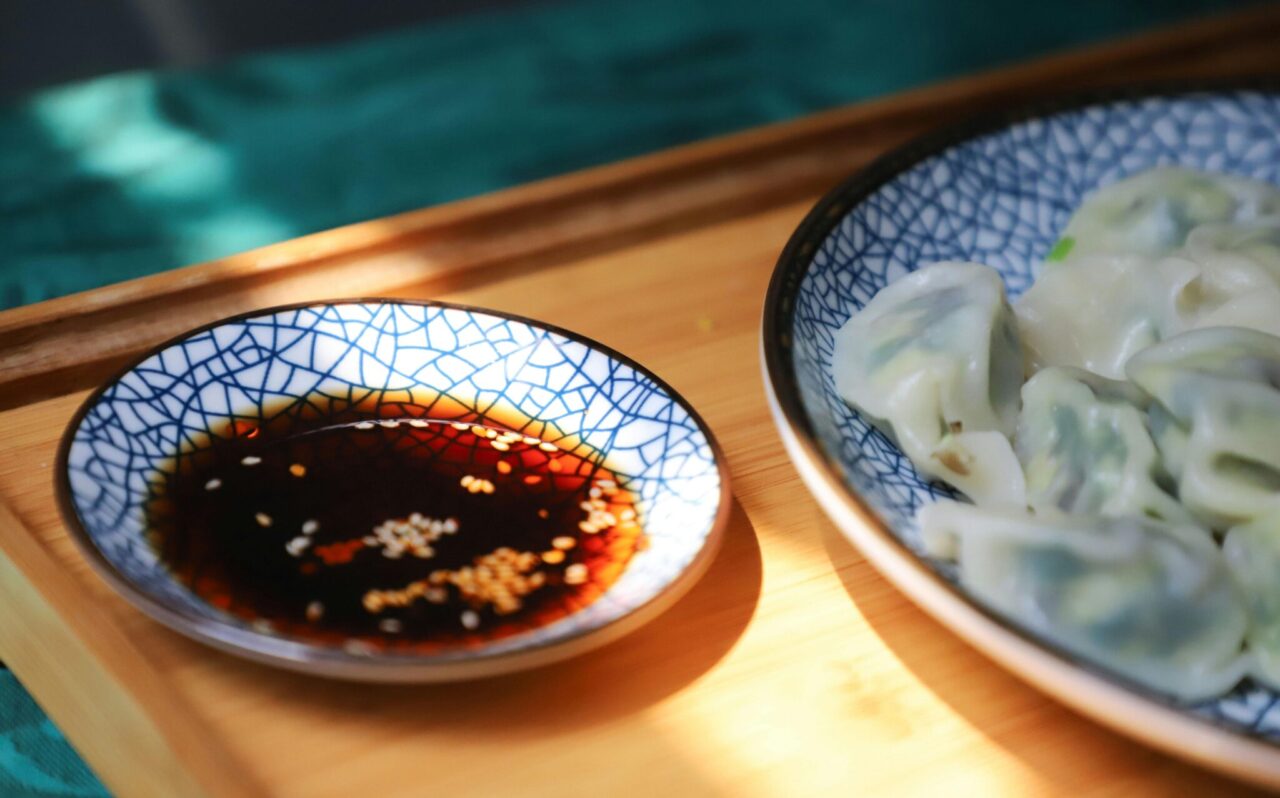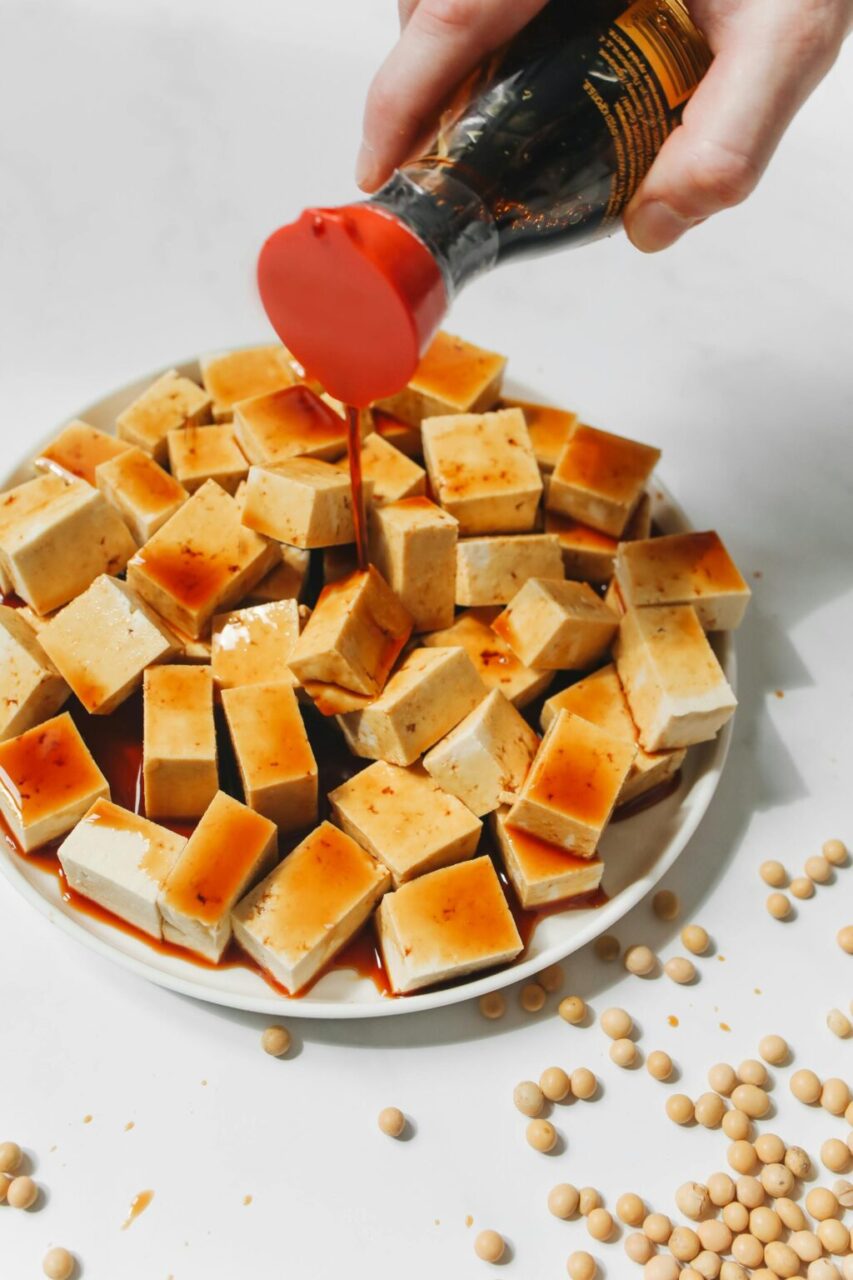Nederlands
English
Deutsch
Français
Soy sauce is the most renowned flavor enhancer in Asian cuisine. In fact, it’s an indispensable ingredient. This dark-colored, savory, and sweet sauce is crafted from fermented soybeans and boasts a rich history. From its origins in ancient China to its global popularity today, soy sauce has come a long way to reach its current status. In this article, we delve into the versatility of soy sauce, so you understand precisely the types available and their culinary applications.
Topics covered in this article include:
Soy sauce is a fermented product with a salty, savory, umami taste. Originating from China, over 2000 years ago, people in China first utilized soy sauce for food preservation. Soon after, it gained popularity in Japanese and Korean cuisines. Today, soy sauce is integral to both cooked and raw dishes, such as sushi, stews, or stir-fried noodles. Traditionally, soy sauce is made from soybeans, wheat, salt, water, and fermentation agents like mold or yeast. Soy sauce is now used worldwide in various cuisines. In the Netherlands, soy sauce is particularly popular and often associated with sushi. However, soy sauce is more versatile than merely a dip for sushi.

The process begins by soaking soybeans in water to soften them, followed by cooking until tender. Sometimes, roasted wheat grains are added to the cooked soybeans, imparting an extra depth of flavor. The resulting mixture, known as koji, is then combined with water and salt. Occasionally, a mold culture called koji-kin is added to promote fermentation. Fermentation occurs in large vats where natural yeast and mold cultures on the beans convert sugars into alcohol and acids, resulting in soy sauce’s distinctive flavor.
The duration of fermentation can vary from several months to several years, depending on the desired taste and texture. After fermentation, the liquid is separated from the solids by pressing and filtering, yielding crude soy sauce. To extend shelf life and eliminate any harmful bacteria, the crude soy sauce is pasteurized, briefly heated to kill harmful bacteria.
For some varieties, soy sauce is further aged to enhance its flavor, after which it is bottled and ready for consumption. This is the general process for making soy sauce, which may vary depending on the manufacturer’s specific methods.
Soy sauce has numerous applications, especially in Asian cuisine, often centered around its umami taste. However, not all soy sauces are the same. There are many different types, each with its own flavor profile. The variations in soy sauce are based on how it’s fermented, including factors like temperature, time, and ingredients. Additionally, there is a clear distinction between Chinese and Japanese soy sauce, with the Chinese version typically containing less grain than Japanese soy sauce. Therefore, Japanese varieties tend to be slightly sweeter than Chinese ones. Some popular types of soy sauce include dark, light, seasoned, sweet, spicy, and low-sodium varieties. Each type has a different application.
Dark soy sauce is often used to impart a deeper color and rich flavor to braised dishes and stir-fries, such as beef in black bean sauce. It’s also utilized for marinating meats to add an umami flavor. Dark soy sauce is typically thicker and less liquid. The sauce is syrupy and is solely used in warm dishes.
Light soy sauce is commonly used as a base for marinades for fish and tofu due to its salty flavor and lighter texture. It enhances the taste of ingredients without overpowering them. Light soy sauce is also used as a dipping sauce for sushi, gyoza, dumplings, and other Asian snacks due to its subtle salty flavor. It can also be used in salad dressings, adding a subtle salty flavor to a dressing, complementing other flavorings like oil, vinegar, herbs, honey, and spices.
Seasoned soy sauce is often used in stir-frying vegetables, meats, or tofu to add extra flavor and spiciness to the dish. It’s also used as a flavor enhancer. Depending on the type of seasoned soy sauce, it can be added to stews, soups, or sauces to provide a deeper and spicier taste.
Sweet soy sauce is frequently used as a glaze for grilled meats, fish, or vegetables due to its rich and syrupy texture and sweet taste. Moreover, it’s an ingredient in dipping sauces. It can be used in various dipping sauces for spring rolls, egg rolls, and other snacks for a sweet and savory taste.
Spicy soy sauce can be used as part of marinades for meat to add a spicy flavor to dishes like grilled chicken wings. Additionally, it’s used for dipping sauces for fried dishes or roasted vegetables for a spicier taste.
Low-sodium soy sauce can be used as a healthier alternative to traditional soy sauce in recipes where the salt content may already be high. This version closely resembles light soy sauce but contains less salt. It can still be used as a flavor enhancer in dishes like stir-fries, soups, and stews.
A 15 milliliter (approximately 1 tablespoon) serving of soy sauce contains:
Of course, the nutritional value varies depending on the type of soy sauce. While it generally has a low calorie count, it contains a significant amount of salt. However, soy sauce has a relatively high protein content compared to other sauces. The fat and carbohydrate content are minimal, making soy sauce a light and flavorful choice for seasoning dishes. Additionally, soy sauce contains small amounts of iron, vitamin C, and magnesium.
Soy sauce can be stored at room temperature. According to some manufacturers, soy sauce may lose its freshness and flavor after opening. Storing it in the refrigerator will slow down this process, which can be useful if the soy sauce is not used frequently or needs to last longer. Although not necessary, refrigerating soy sauce might be preferable.

MOOIJER offers various types of soy sauce. We provide light, dark, seasoned, spicy soy sauce, as well as low-sodium soy sauce. In other words, for reliable procurement of quality and variety, look no further than MOOIJER.